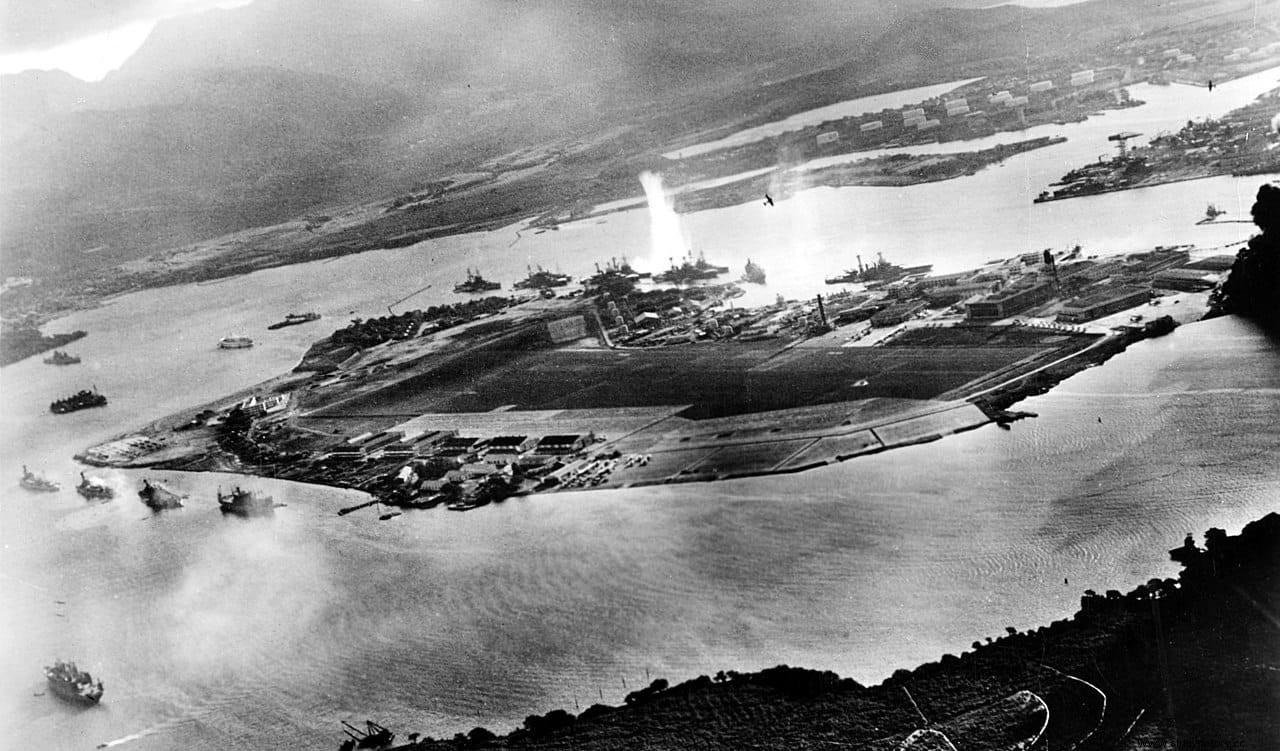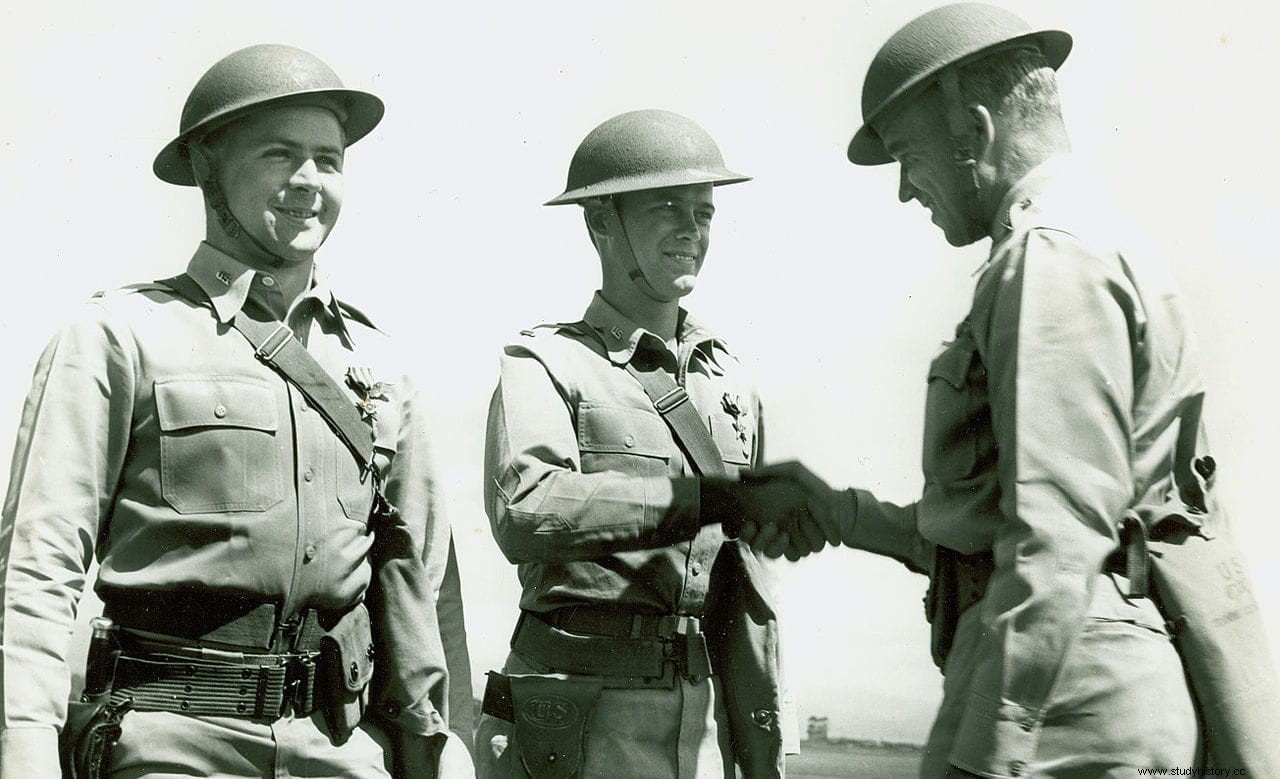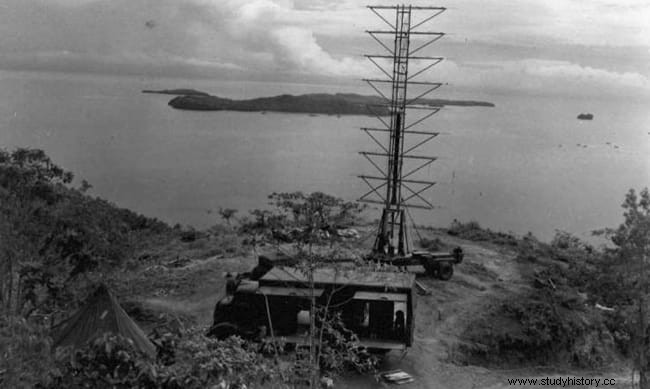In a previous article we saw how the United States founded and developed the WASP (Women Airforce Service Pilots) in 1942, a body of women aviators who were in charge of carrying out freight flights, so that male pilots would be freed from those services to be able to join the front. But it was not the only case; not even the first. A few months earlier, the surprise Japanese attack on Pearl Harbor led to the improvisation of women to collaborate in air defense and relieve men of other duties, leaving them available for combat. It was baptized with the name of WARD (Women’s Air Raid Defense ).
A few minutes before eight o'clock on the morning of December 7, 1941, three and a half hundred Japanese planes from six aircraft carriers arrived at the Hawaiian island of Oahu and dropped on the facilities of the Pearl Harbor military base, where it was anchored. the US Navy. The Japanese managed to sink four battleships and damage as many others, as well as hit three cruisers, three destroyers, a training ship and a minelayer. In addition, they destroyed one hundred and eighty-eight aircraft and caused nearly two and a half thousand fatalities.

That raid, carried out in two waves, was a tactical success but strategically it did not have the material impact that it seemed a priori, since six of the battleships were able to return to service and the key facilities, such as the fuel depots, the shipyard or the power plant. , among others, came out unscathed; so did the ships that constituted the main objective, the aircraft carriers, because they had gone off mission, so that the US forces were only pressed in the Pacific for about six months, after which they returned to stop the adversary.
However, the attack on Pearl Harbor precipitated the entry of the US into World War II and left the archipelago in fear of a new raid air or an enemy invasion. Something that reinforced the fact that, immediately, as of December 8, Japan extended its war operations to other parts of Southeast Asia (Thailand, the Philippines, Malaysia...). That is why the following days were filled with nerves and paranoia, desperately organizing the defense of Hawaii against what was considered an imminent danger.

That's how tense things were when, a few days later, Army Air Corps Brigadier General Howard C. Davidson picked up the phone at four in the morning to make an untimely and urgent call. On the other end of the line, Una Walker, who was a military wife, answered and received from the other an unusual request:since of her position in the Red Cross she would know many women, she had to gather twenty who were "bright and reliable" for a job. secret job. Mrs. Walker woke up her husband and in an hour they made a list of friends and acquaintances, who were called to a meeting at the Royal Hawaiian Hotel in Waikiki (a neighborhood of Honolulu, the island capital) for the day after Christmas.
The date was not trivial because that December 26, Chester Nimitz, newly appointed admiral in chief of the Pacific fleet, was scheduled to arrive on the island. So the selected women, most of them from a military family, gathered in front of the Spanish-style facade of that luxury tourist establishment, which during the war would be used as R&R (acronym for Rest and Recuperation , the relaxation time for the military), and then they were accommodated in a room where Howard Davidson, Una Walker and a friend of hers, Mrs. Howard (also a military wife) explained to them why her presence had been requested.

The idea was to create a female corps that would collaborate in the air defense of the archipelago against another possible Japanese attack, assuming the functions that men performed at that time in various fields so that they could dedicate themselves to other purely combat functions; a need derived from the high number of casualties suffered on December 7. Of course, women had to be volunteers, not have children and keep their mission secret; likewise, they would retain their civilian status, even though they wore a uniform (which was pale blue). The attendees accepted and that is how WARD, an acronym for Women’s Air Raid Defense, was born. .
The success obtained in the call led to a much broader one for a hundred women, with whom it was hoped to fill all the vacant positions in the air defense system, quite a few because Davidson had had to transfer troops to Samoa, Fiji and New Caledonia to establish alert units there. Age limits ranging from twenty to thirty-four were established, and an aptitude test was established, after which those who passed underwent a two-week training. The template, which at first integrated only kamaaina s haoles (white residents), was later completed with others from the rest of the ethnic groups (prior investigation of their lives, since many were of Eastern origin) and even from all over the country.

On January 1, 1942 they began their preparation. It was held in the 'Iolani Palace, a building that was the residence of the Hawaiian kings from 1844 until their overthrow in 1893 (it is the only royal palace on US soil) and that had been repurposed as the temporary seat of the military government. , since martial law had been decreed. Its main mission was to accurately record the position of each plane detected by radar and manually reflect it on a large map using figures -as seen in so many movies-, apart from trying to find the planes that were lost in flight or identify them.
Consequently, the already members of the WARD were trained for two positions:Oscar (code name to refer to the radar operator) and Rascal (for the person in charge of moving the figures on the map) . The innovative tracking and detection system had been developed a few years earlier, but the entry into the war gave the final push. In fact, it was the US Navy that gave it its name and began to adopt it little by little in the 1930s with British advice (precisely, one of its inventors, Sir Robert Watson-Watt, visited Hawaii at that time as adviser). On the island there was and it worked when detecting the enemy; what failed was coordination in communications.

On February 1, once the women had learned to operate the radar, they were assigned to Fort Shafter (US headquarters for Asia and the Pacific), where Little Robert was. , as the ICC (Information and Control Center was nicknamed ) of the Air Defense Command. They would take turns to cover twenty-four hours of each day in shifts of six hours of work and six hours of rest throughout eight days, after which they were granted thirty-two hours off. The total time spent at the WARD was one year and they received a salary that ranged between one hundred and forty-five and two hundred and twenty-five dollars a month. This is explained by Executive Order 9063, issued on February 16, 1942 by President Roosevelt.
Said order authorized the Civil Service Commission to adopt special procedures related to the recruitment, placement, and changes in status of personnel for federal service, serving as a legal basis for those Hawaiian women as federal officials following the model of the WAAF (Women's Auxiliary Air Force , the British precedent of the WASP that we reviewed at the beginning). In other words, they were part of the public administration, not the armed forces, even though the WARD, due to its characteristics, was integrated, as a detachment of Company A, into the 7th Fighter Wing , in the Signal Aircraft Warning Regiment .
This regiment, created in 1860, was the one that dealt with new technologies in war communications and, among other things, had devised the SCR-300 (an FM backpack radio) and would soon create the flotilla Catboat (transmission ships for amphibious operations in the Pacific). In command was General Robert Douglas Jr., who had a supervisor as an intermediary with the members of the group (all of whom, by the way, had the category of officers); the first in the position were Gwendoline Williams and Mary Erdman; later Catherine Coonley joined.

However, throughout the war there was a restructuring:on June 13, 1943, the WARD was separated from the Signal Corps to second him to the 17th Fighter Command . By then it had expanded its scope of action from the island of Oahu, also organizing itself in the rest of the archipelago throughout 1942:in Maui, on July 30; in Hilo, on August 10; and in Kauai, on September 14. During the process, in each of those islands, there were two women from WARD as advisers accompanying their superiors. As can be deduced, it was necessary to recruit more staff and, thus, more than half a thousand women came to participate.
As there were no more air raids on Hawaii, their mission was relatively calm and the most tense moment was on March 5, 1942, just a month after starting it, when they detected two unidentified aircraft that did not respond to the requirements in that regard, with the added problem that visual identification was difficult as it was night and it was raining. Finally, the spotlights illuminated both Emily , ie, Kawanishi H8K; Japanese seaplanes that had taken off from the Marshall Islands to bomb some aircraft carrier but were lost. The pilots dropped the bombs blindly and one exploded in the mouth of Pearl Harbor, while the other did so outside Honolulu without the anti-aircraft or interceptor fighters being able to stop them; there were no casualties or damage.

In spite of everything, the detection system worked and the WARDs proved to know how to do their job; with double merit, since in case of attack those women could not be evacuated but had to remain in their post. So much so that, later, they took an active part in the preparations for the Battle of Midway (June 4-7, 1942), controlling the intense air traffic and explaining the alarms that were triggered when some novice pilot left the corridor he was destined for. . After the victory congratulations rained down, but from then on the Japanese danger to Hawaii disappeared and many of the WARDs had to leave the service or go into the reserves.
In 1945, after the war, the services of the WARD were no longer needed and it was dissolved, although some of its members continued in their positions, already adapted to civilian life; the last shift took place on September 27, 1945 and, from then on, they were replaced by military personnel. Unfortunately, there is very little information about this curious episode in history because in 1983 a fire destroyed the archives that kept the WARD's documentary collections, so that a good part of the sources come from press articles. Some novels have also been published, such as Radar girls , by Sara Ackerman.
